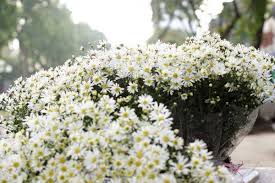Chrysanthemums and Traditional Festivals: Celebrating Culture and Heritage
Chrysanthemums (Chrysanthemum spp.) hold a special place in traditional festivals around the world, where they symbolize beauty, longevity, and cultural significance. From Asia to Europe, these captivating flowers play a central role in ceremonies and celebrations that honor history, spirituality, and the changing seasons. Explore the rich tapestry of chrysanthemum festivals and their profound cultural meanings.

1. Chrysanthemum Festivals in Asia
In Asia, chrysanthemums are deeply intertwined with cultural traditions and festive occasions:
- China: The Chongyang Festival, also known as the Double Ninth Festival, falls on the ninth day of the ninth lunar month and honors the chrysanthemum as a symbol of longevity. People climb mountains and wear chrysanthemum flowers to ward off evil spirits.
- Japan: The Festival of Happiness (Kiku Matsuri) held at the Meiji Shrine in Tokyo showcases stunning chrysanthemum displays with meticulously trained flowers. Chrysanthemums are associated with the Imperial Family and symbolize the spirit of autumn.
- South Korea: The Goyang Chrysanthemum Festival in Goyang City features elaborate chrysanthemum exhibitions, attracting visitors from across the country. Chrysanthemums are admired for their beauty and grace, reflecting the nation’s cultural heritage.
2. European Chrysanthemum Festivals
In Europe, chrysanthemum festivals blend floral beauty with local customs and seasonal celebrations:
- United Kingdom: The Malvern Autumn Show in Worcestershire highlights chrysanthemum displays and competitions, showcasing the diversity of chrysanthemum cultivars. The flowers symbolize the transition from summer to autumn.
- Netherlands: Chrysanthemum festivals in the Netherlands celebrate the artistry of floristry and horticulture, with exhibitions featuring creative arrangements and innovative uses of chrysanthemums in floral design.
3. Symbolism and Cultural Significance
Chrysanthemums carry deep symbolism and cultural significance in traditional festivals:
- Longevity: In many cultures, chrysanthemums symbolize longevity and resilience, making them popular gifts for elderly relatives and revered figures.
- Seasonal Transition: Chrysanthemum festivals often coincide with the transition from summer to autumn, marking a time of reflection and appreciation for nature’s bounty.
4. Artistic Expression and Craftsmanship
Chrysanthemum festivals showcase the artistry and craftsmanship associated with floral design:
- Ikebana: Japanese floral arrangement (ikebana) often features chrysanthemums, highlighting their role in expressing seasonal beauty and spiritual harmony.
- Floral Sculpture: Chrysanthemum festivals feature intricate floral sculptures and installations that showcase the versatility and elegance of chrysanthemum blooms.
5. Community Engagement and Heritage Preservation
Chrysanthemum festivals foster community engagement and preserve cultural heritage:
- Local Traditions: Festivals provide opportunities for communities to showcase local traditions, culinary delights, and artisanal crafts alongside chrysanthemum displays.
- Educational Programs: Schools and cultural organizations use chrysanthemum festivals as educational platforms to teach about botany, horticulture, and the importance of preserving floral diversity.
In conclusion, chrysanthemum festivals celebrate the beauty and cultural significance of these iconic flowers, uniting people in shared traditions and festive spirit. Through festivals, communities honor their heritage and pay homage to the enduring allure of chrysanthemums in art, nature, and everyday life.
Chrysanthemums and Traditional Festivals: A Tapestry of Cultural Celebrations
Chrysanthemums, revered for their beauty and symbolism, are integral to a diverse array of traditional festivals celebrated around the world. These festivals, deeply rooted in cultural heritage and spiritual beliefs, showcase the enduring significance of chrysanthemums in local customs and communal festivities.
1. Festivals in Asia
In Asia, chrysanthemum festivals are imbued with profound meanings and are cherished occasions for honoring tradition and spirituality:
- China: The Chongyang Festival (Double Ninth Festival) in China pays homage to chrysanthemums as symbols of longevity and vitality. People climb mountains adorned with chrysanthemums and enjoy chrysanthemum-themed foods and teas.
- Japan: Kiku Matsuri, or the Chrysanthemum Festival, held in November, showcases the art of kiku (chrysanthemum) cultivation and arrangement. Intricately trained chrysanthemums are displayed in breathtaking arrangements, symbolizing the autumn season and the Imperial Family.
- Korea: South Korea’s Goyang Chrysanthemum Festival attracts visitors with its stunning chrysanthemum displays and cultural performances. Chrysanthemums are regarded as auspicious flowers, embodying elegance and grace in Korean culture.
2. European Festivals
In Europe, chrysanthemum festivals blend horticultural artistry with local traditions:
- United Kingdom: The Malvern Autumn Show celebrates the beauty of chrysanthemums with floral displays and competitions. The festival marks the transition from summer to autumn, highlighting the resilience and diversity of chrysanthemum cultivars.
- Netherlands: Chrysanthemum festivals in the Netherlands showcase the Dutch passion for floristry and gardening. Exhibitions feature innovative floral arrangements and demonstrate the versatility of chrysanthemums in contemporary design.
3. Symbolism and Rituals
Chrysanthemums hold deep symbolic significance in traditional festivals:
- Longevity and Resilience: Chrysanthemums symbolize longevity, resilience, and renewal, making them popular gifts for honoring elders and ancestral spirits.
- Honoring Ancestors: In many cultures, chrysanthemum festivals coincide with ancestor veneration rituals, where offerings of chrysanthemums are made at ancestral gravesites.
4. Cultural Heritage and Identity
Chrysanthemum festivals preserve cultural heritage and foster a sense of community identity:
- Artistic Expression: Festivals showcase the artistry of floral design, with chrysanthemums serving as mediums for creative expression and cultural storytelling.
- Community Gatherings: Festivals bring communities together, providing opportunities for intergenerational exchange, storytelling, and the transmission of traditional knowledge.
5. Education and Outreach
Chrysanthemum festivals serve as educational platforms for promoting botany, horticulture, and environmental awareness:
- Workshops and Demonstrations: Festivals offer workshops on chrysanthemum cultivation, floral arrangement, and sustainable gardening practices, engaging participants of all ages.
- Environmental Conservation: Festivals promote the conservation of floral diversity and highlight the importance of preserving indigenous plant species for future generations.
In essence, chrysanthemum festivals epitomize the intersection of nature, culture, and community, enriching lives through vibrant displays of floral artistry and cultural heritage. These festivals celebrate the enduring legacy of chrysanthemums as symbols of beauty, resilience, and the timeless bonds that connect humanity with nature.

